Tughlaqabad
Archaelogical Survey of India (Delhi circle) is protecting the ancient Tughlaqabad fortification which has cracks and broken walls.
- It was built by the founder of the Tughlaq Dynasty, Ghiyas-ud-din-Tughlaq in 1321, Delhi.
- Tughlaq’s name was Ghazi Malik, and he started out as a governor under the rule of Alauddin Khalji.
- It was established as the 3rd historic city of Delhi, which was later abandoned in 1327.
- The fort is a gigantic stone structure, with walls that are 10-15 metres high with the Crowning of walls are battlement parapets and bastions.
- It is in two parts, the citadel and palaces along the southern walls forming one unit and the city to the north the other.
- The fort-city of Tughlaqabad was supposed to have as many as 52 gates, out of which only 13 remain now.
- The ‘Tudor’ arch, a slightly-pointed ‘Tartar’ dome and the use of beam-and-arch for openings are new features.
- Originally it stood within an artificial reservoir and was connected with Tughluqabad by a causeway, now pierced by the Qutb-Badarpur road.
- Across the main entrance of Tughluqabad on the south is Ghiyathu’d-Din’s tomb.
- It is believed that the fort was cursed by the famous Sufi saint, Nizamuddin Auliya who was contemporary of Ghiyas-ud-din-Tughlaq.
|
Seven Historic Cities of Delhi
|
Founders
|
|
LalKot (Qila Rai Pithora)
|
Anangpal Tomar
|
|
Siri
|
Alauddin Khilji
|
|
Tughlaqabad
|
Ghiyasuddin Tughlaq
|
|
Jahanpanah
|
Muhammad Tughlaq
|
|
Ferozabad
|
Feroz Shah Tughlaq
|
|
Dinpanah
|
Started by Humayun and finished by Sher Shah
|
|
Shahjahanabad (Purani Dilli)
|
Shah Jahan
|
|
Delhi Sultanate
|
Important Rulers (A.D.)
|
|
Slave or Mamluk Dynasty
|
Qutub-Ud-din Aibak (1206- 1210)
|
|
Shams-ud-din Iltutmish (1211-1236)
|
|
Razia Begum (1236- 1240)
|
|
Ghias-ud-din Balban (1266-1287)
|
|
Khilji Dynasty
|
Jalal-ud-din Khilji (1290-96)
|
|
Alauddin Khilji(1296-1316)
|
|
Tughlaq Dynasty
|
Ghiyasuddin Tughlaq (1320-1325)
|
|
Muhammad Bin Tughlaq (1325-51)
|
|
Firuz Shah Tughlaq (1351-1388)
|
|
Sayyid Dynasty
|
Khizr Khan (1414-1421)
|
|
Mubarak Shah (1421-1434)
|
|
Lodi Dynasty
|
Bahlol Lodi (1451-1489)
|
|
Sikander Lodi (1489-1517)
|
|
Ibrahim Lodi (1517-1526)
|
Reference
The Indian Express | Tughlaqabad
Char Dham Yatra
Over 31,78,000 people have visited and 149 pilgrimages died in the Char dham Yatra in the initial 65 days in Uttarakhand.
- Char Dham – Adi Shankaracharya (686–717 AD) propounded the concept of the Char Dham temples.
- He also established the famous Shankaracharya Peethams or Mathas in the four directions for the study and propagation of the 4 Vedas.
|
Dhams
|
Temples
|
Yugas
|
|
Badrinath
|
Badrinarayan Temple of Vishnu
|
Satya Yuga
|
|
Dwarka
|
Dwarkadhish Temple of Krishna
|
Dwapar Yuga
|
|
Puri
|
Jagannath Temple Puri
|
Kali Yuga
|
|
Rameswaram
|
Shree Rameshwaram Jyotirlinga Temple
|
Treta Yuga
|
- Badrinath (Uttarakhand) - The temple is also one of the 108 Divya Desams dedicated to Vishnu holy shrines for Vaishnavas who is worshipped as Badrinath.
- It is situated along the banks of Alaknanda river.
- Dwarka (Gujarat) – It is dedicated to Lord Krishna.
- It is located on the right bank of the Gomti river at the mouth of the Gulf of Kutch facing the Arabian Sea.
- Puri (Orissa) - Jagannath Temple located on the coast of Bay of Bengal.
- It is associated with the Mahanadi River.
- Rameswaram (Tamilnadu) – It is dedicated to the god Shiva.
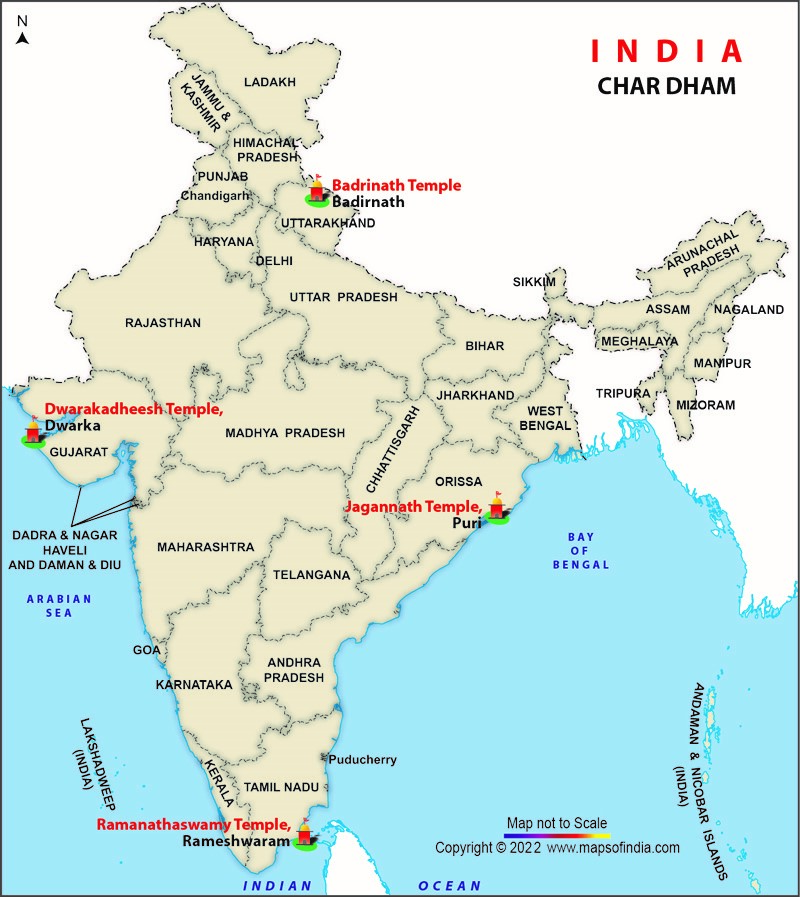
Chota Char Dham (Uttarakhand Char Dham)
- It includes Kedarnath, Yamunotri, Badrinath, and Gangotri.
- It is situated in Garhwal region of Uttarakhand, Indian Himalayas.
- Yamunotri Dham – It is situated at Yamunotri where the sacred river the Yamuna originates.
- It named after Goddess Yamuna, the twin sister of Yama (the God of death).
- Gangotri Dham Gaumukh, the sacred snout of the Gangotri Glacier is where the River Ganga begins its journey.
- Dedicated to Goddess Ganga.
- Kedarnath Dham - It is the highest located jyotirling.
- The temple is an old stone edifice located on the shores of Mandakini River.
- It is believed to have been built by the Pandavas and revived by Adi Sankara in 8th century CE.
- Badrinath Dham – It is sacred to Lord Vishnu, particularly in Vishnu's dual form of Nara-Narayana.
- Badrinath temple was re-established by Adi Shankracharya in the 8th century.
- The Badrinath Dham is situated on the banks of the Alaknanda river.
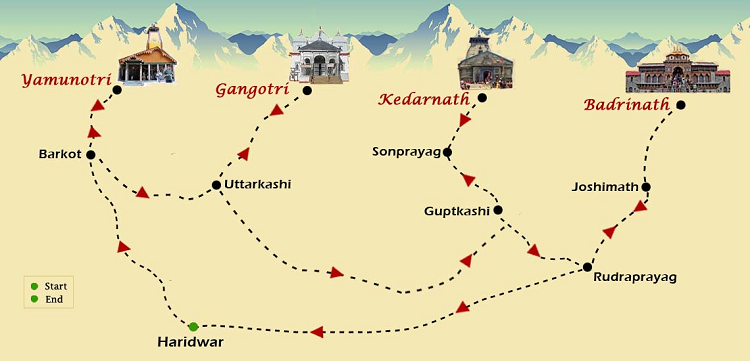
Reference
The Hindu | Char DHam Yatra
Chip 4 Initiative
US, Japan, South Korea and Taiwan has launched a forum to cut off chips to China.
- Chip 4 Initiative includes world’s top semiconductor producing countries namely the U.S., Japan, Taiwan, and South Korea.
- It is also known as “Fab 4” initiative. (Fab refers to an industry term for the fabrication plants).
- Objectives
- Support industry efforts to diversify their manufacturing base away from China
- Protect Intellectual property of companies in member countries
- Develop policy regarding export of the most advanced semiconductors and equipment
- Taiwan – It is the global epicenter of semiconductor manufacturing with the manufacture of over 60% of the world’s chips.
- Japan – It is dominant in production of critical manufacturing equipment and materials such as photoresists.
- South Korea is a global leader in memory chip production.
India, Japan and Australia had announced plans in 2021 to establish a semiconductor supply chain initiative.
Related links – Producing a Perfect Semiconductor Chip
Reference
The Indian Express| us-to-reboot-indias-chip-ambitions
Digital Twins
A recent data shows that Digital twins will reshape business and society by 2035.
- Digital twin - It is a digital representation of a physical object, process, service or environment that behaves and looks like its counterpart in the real-world.
- It spans the object's lifecycle and uses real-time data sent from sensors on the object to simulate the behavior and monitor operations.
- Digital twins can replicate many real-world items, from single pieces of equipment in a factory to full installations, such as wind turbines and even entire cities.
- Types - Component twins/Parts twins, Asset twins, System or Unit twins, Process twins.

The concept of using a digital twin as a means of studying a physical object was first introduced by NASA in the 1960s.
|
Digital Twin
|
Simulation
|
- Utilize digital models to replicate a system’s processes
- Studies multiple processes
- Digital twins are designed around a 2-way flow of information.
- A digital twin is built out of input from IoT sensors on real equipment, which means it replicates a real-world system and changes with that system over time.
- A digital twin provides all parts of the business insight into how some product or system they're already using is working now.
|
- Utilize digital models to replicate a system’s processes
- Studies one particular process
- Simulations usually don’t benefit from having real-time data
- A simulation is designed with a CAD system or similar platform, and can be put through its simulated paces, but may not have a one-to-one analog with a real physical object.
- Simulations tend to be used during the design phase of a product's lifecycle, trying to forecast how a future product will work
|
Reference
Business Standard | Digital-twins-will-reshape-business-and-society-by-2035-shows-data
East of Horn of Africa and the Great Lakes (EHAGL) region
According to the United Nations High Commissioner for Refugees (UNHCR), there were approximately 11.71 million Internally Displaced Persons (IDPs) in East and Horn of Africa and the Great Lakes (EHAGL) region as of March 31, 2023.
Horn of Africa
- It is a region in eastern Africa.
- Countries included - Djibouti, Eritrea, Ethiopia, and Somalia.
- Coastlines included - Red Sea, Gulf of Aden, and Indian Ocean.
- Rivers flowing in the region – Blue Nile, White Nile, Dawa river.
- Lakes present in the region –Lake Tana, Lake Turkana.
- Ogaden desert – It is situated between the Somalia-Ethiopia border and the Ethiopian Eastern Highlands.
- The Horn of Africa, almost equidistant from the Equator and the Tropic of Cancer, is an arid region.
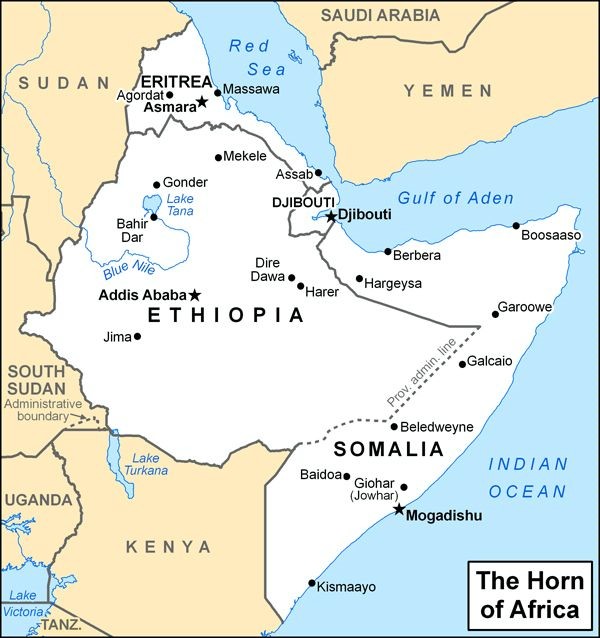
Great Lakes Region
- The African Great Lakes are a series of lakes constituting the part of the Rift Valley lakes in and around the East African Rift.
- They include Lake Victoria, the 2nd largest fresh water lake in the world in terms of surface area.
- Lake Tanganyika, the world's second largest in volume as well as the second deepest.
- Lists of the African Great Lakes - Lake Victoria, Lake Tanganyika, Lake Malawi, Lake Turkana, Lake Albert, Lake Kivu, and Lake Edward.
- The 4 countries that make up the Great Lakes region are the Democratic Republic of the Congo (D.R.C.), Burundi, Rwanda, and Uganda.
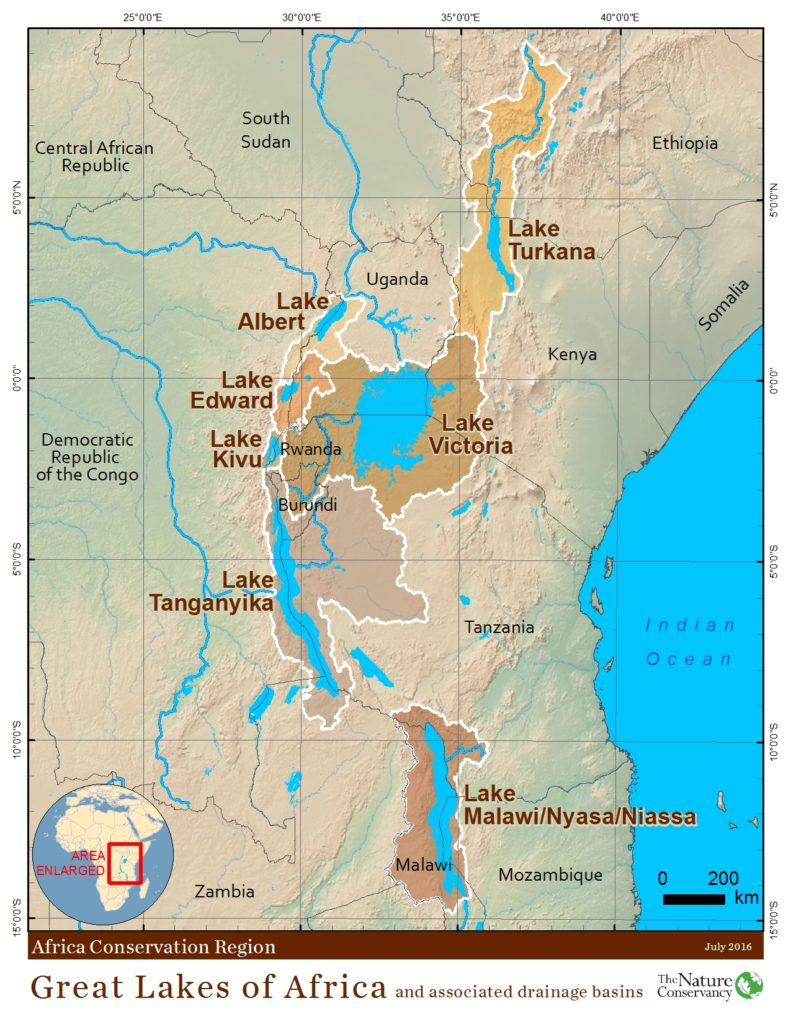
Quick Facts
The Great Lakes of North America
- It comprises 5 lakes - Superior, Michigan, Huron, Erie, and Ontario.
- The lakes provide a natural border between Canada and the United States.
- Lake Superior is the largest of the five Great Lakes of North America.
- Niagara River, including Niagara Falls, connects Lake Erie to Lake Ontario.
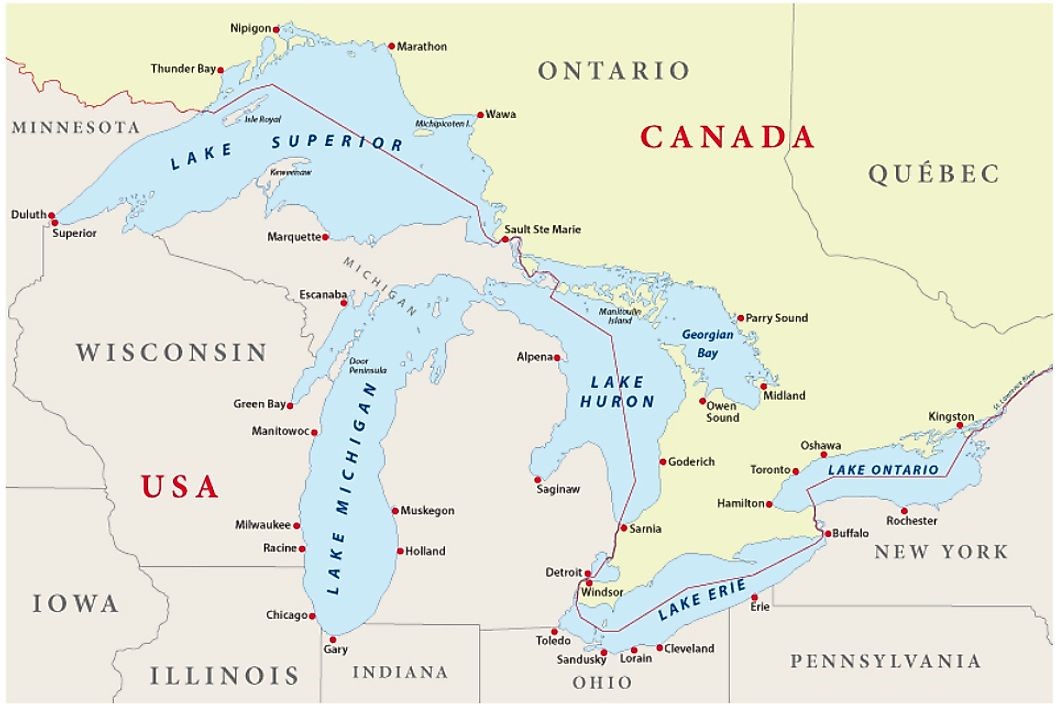
Reference
Down to Earth | 11-7-million-persons-displaced-in-east-africa-and-great-lakes-region





